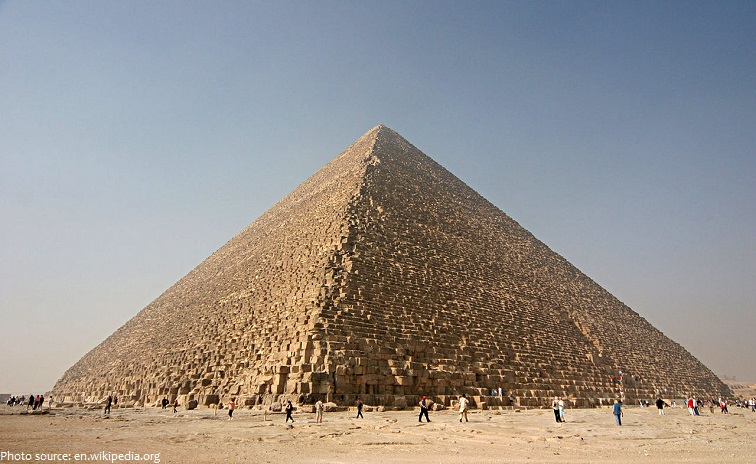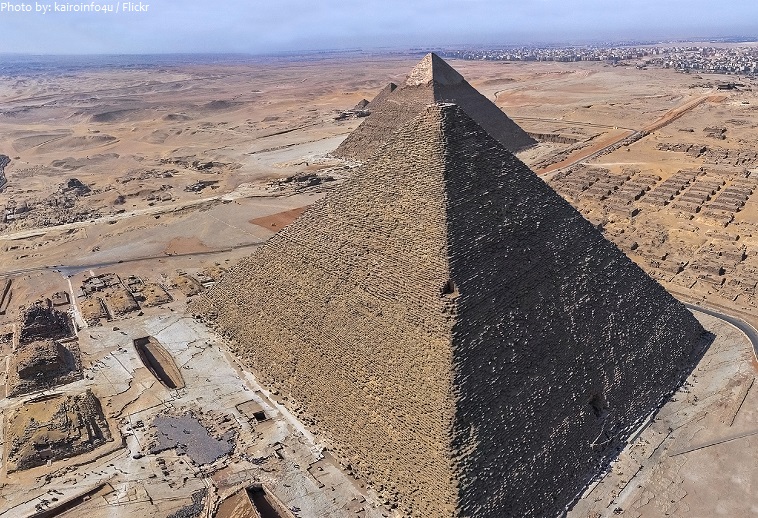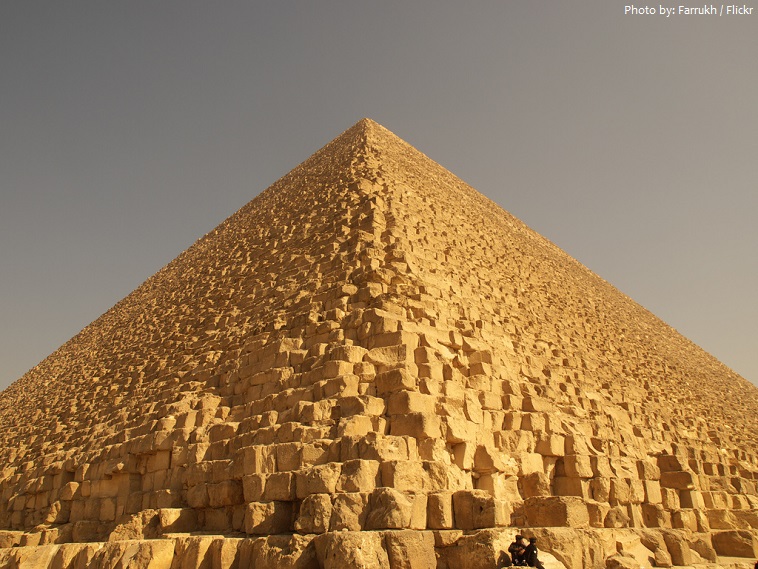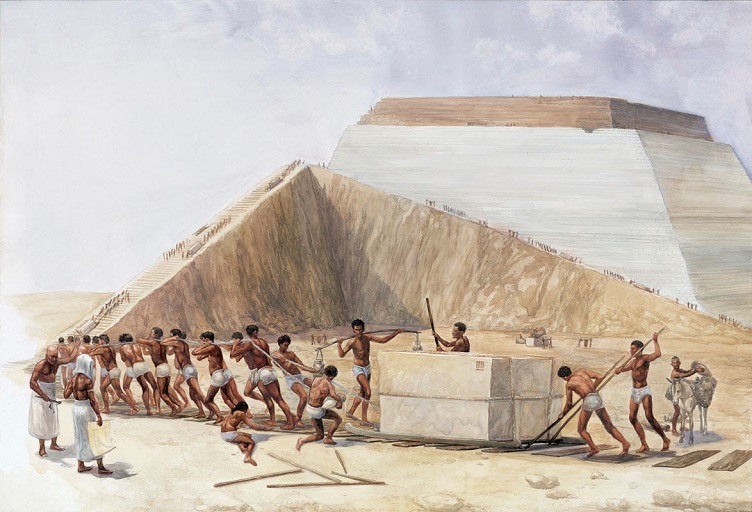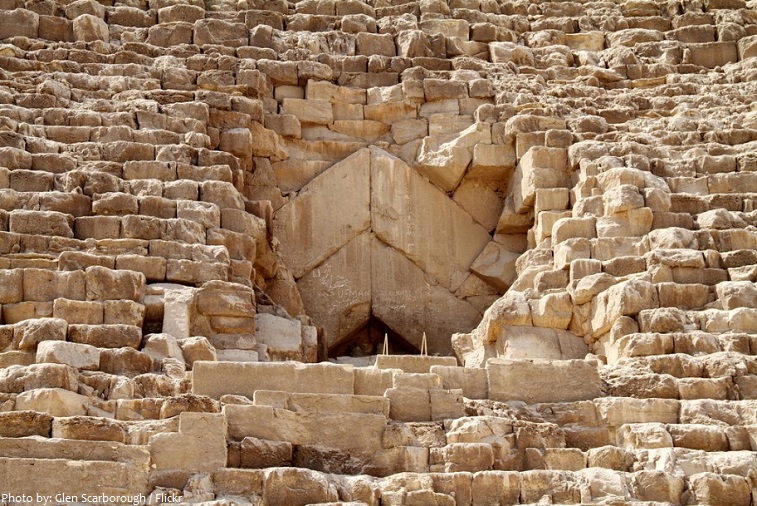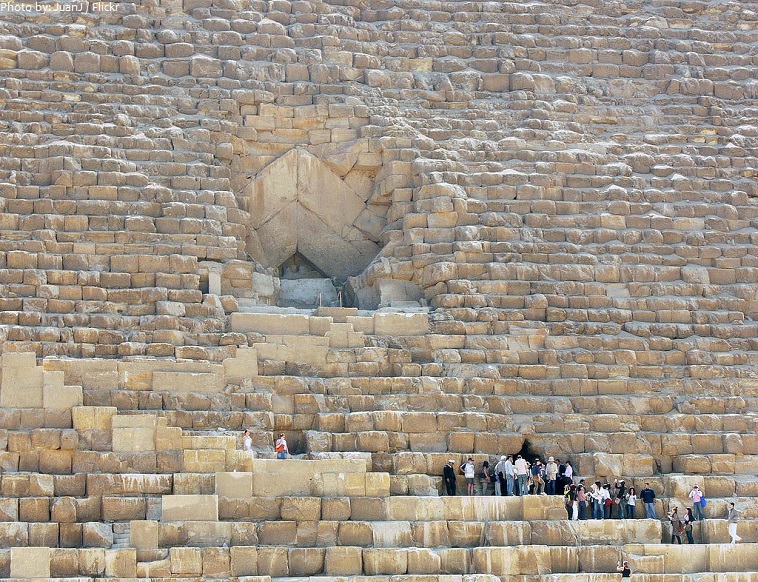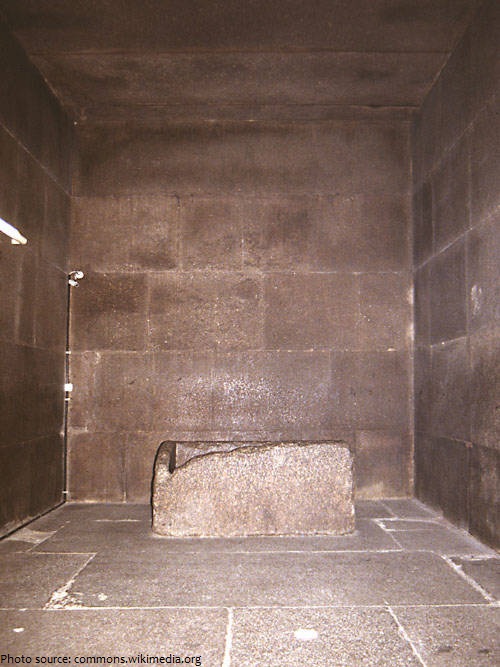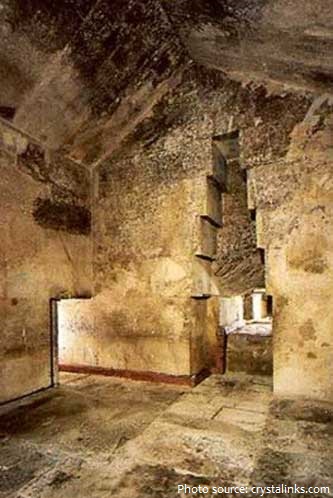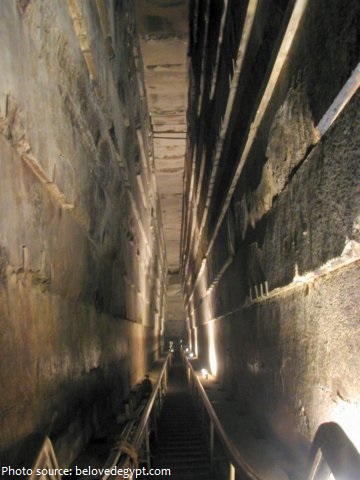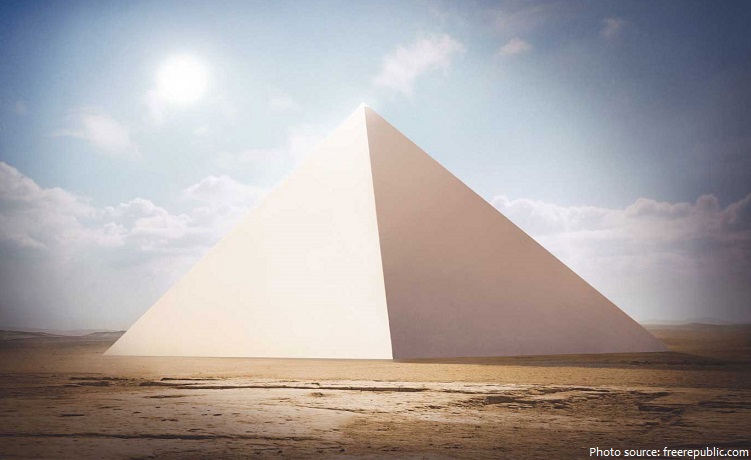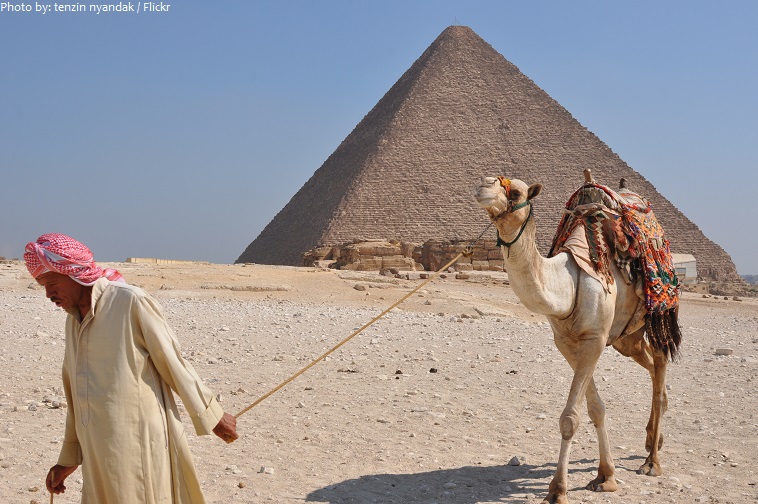The Great Pyramid of Giza is a huge pyramid built by the Ancient Egyptians.
It is part of a complex of 3 large pyramids in the Giza Necropolis located near modern Cairo, Egypt.
The Great Pyramid of Giza is the most substantial ancient structure in the world – and the most mysterious.
It is the oldest of the Seven Wonders of the Ancient World, and the only one to remain largely intact.
It is believed the pyramid was built as a tomb for Fourth Dynasty Egyptian pharaoh Khufu (often Hellenicised as “Cheops”) and was constructed over a 20-year period concluding around 2560 BC.
When it was built it was 146.5 meters (481 feet) tall and measured 230.4 meters (755.9 feet) along its sides. It was the tallest building in the world for over 3,800 years.
Today, because of erosion, it is 138.8 meters (455 feet) tall.
Originally, the Great Pyramid was covered by casing stones that formed a smooth outer surface. These casing stones reflected the sun’s light and made the pyramid shine like a jewel; what is seen today is the underlying core structure.
The mass of the pyramid is estimated at 5.9 million metric tons (6.5 million US tons).
The pyramid is estimated to have around 2.3 million stone blocks that an average of 2.3 to 13.6 metric tons (2.5 to 15 US tons) each.
Since it consists of an estimated 2.3 million blocks, completing the building in 20 years would involve moving an average of more than 12 of the blocks into place each hour, day and night.
Herodotus, the Greek historian, wrote that 100,000 workers built the Pyramids, while modern Egyptologists come up with a figure more like 20,000 or 30,000 workers.
There have been varying scientific and alternative theories about the Great Pyramid’s construction techniques. Most accepted construction hypotheses are based on the idea that it was built by moving huge stones from a quarry and dragging and lifting them into place.
The original entrance to the Great Pyramid is 17 meters (56 feet) vertically above ground level and 7.29 meters (23.9 feet) east of the center line of the pyramid.
Today tourists enter the Great Pyramid via the Robbers’ Tunnel, a tunnel created around AD 820 by Caliph al-Ma’mun’s workmen using a battering ram.
Inside of the Great Pyramid are there are three known rooms, or chambers: the King’s Chamber, the Queen’s Chamber, and the Grand Gallery. Small tunnels and air shafts lead to the chambers from the outside.
The “King’s Chamber” is 10.47 meters (34.4 feet) from east to west and 5.234 meters (17.17 feet) north to south. It has a flat roof 5.82 meters (19 feet 1 inch) above the floor. 0.91 m (3 feet) above the floor there are two narrow shafts in the north and south walls. The only object in the King’s Chamber is a rectangular granite sarcophagus, one corner of which is broken.
The “Queen’s Chamber” is exactly halfway between the north and south faces of the pyramid and measures 5.75 meters (18.9 feet) north to south, 5.23 meters (17.2 feet) east to west, and has a pointed roof with an apex 6.23 meters (20.4 feet) above the floor.
The Grand Gallery continues the slope of the Ascending Passage, but is 8.6 meters (28 feet) high and 46.68 meters (153.1 feet) long. At the base it is 2.06 meters (6.8 feet) wide, but after 2.29 meters (7.5 feet) the blocks of stone in the walls are corbelled inwards by 7.6 centimeters (3.0 in) on each side. There are seven of these steps, so, at the top, the Grand Gallery is only 1.04 meters (3.4 feet) wide.
Several mystery shafts extend from the king’s and queen’s chambers. Neither airshafts (they were sealed) nor hallways (they are too narrow), they may have been designed to allow Khufu to travel to the stars in his afterlife. A blocked shaft from the queen’s chamber was penetrated in 2002. Archaeologists discovered another stone blocking their way.
No mummy or remains of any kind have been found in the great pyramid. When it was first entered by the Arabs in 820 AD, the only thing found in the pyramid was an empty granite box in the King’s chamber called the “coffer”.
It has been calculated that the original pyramid with its casing stones would act like gigantic mirrors and reflect light so powerful that it would be visible from the moon as a shining star on Earth.
Appropriately, the ancient Egyptians called the Great Pyramid “Ikhet“, meaning the “Glorious Light“.
Casing stones was used by Arabs to build mosques after an earthquake in the 14th century loosened many of them.
Something that still causes headaches among experts is the mortar used in the construction of the Great Pyramid. The mortar used is of an unknown origin. It has been analyzed and its chemical composition is known but it can’t be reproduced. It is stronger than the stone and still holding up today.
The accuracy of the pyramid’s workmanship is such that the four sides of the base have an average error of only 58 millimeters in length.
The four faces of the pyramid are slightly concave, the only pyramid to have been built this way.
The Great Pyramid is located at the center of the land mass of the Earth. The east/west parallel that crosses the most land and the north/south meridian that crosses the most land intersect in two places on the Earth, one in the ocean and the other at the Great Pyramid.
The Great Pyramid was the centerpiece of an elaborate complex, which included several small pyramids, five boat pits, a mortuary temple, a causeway, a valley temple, and many flat-roofed tombs for officials and some members of the royal family.
